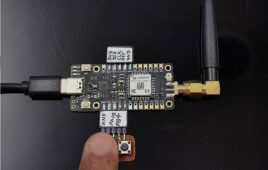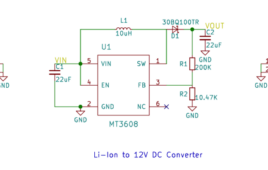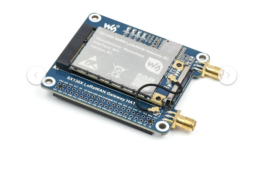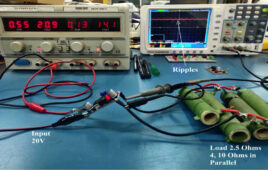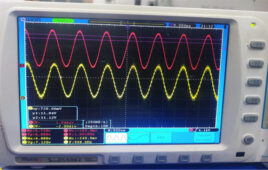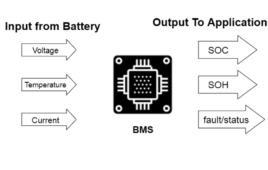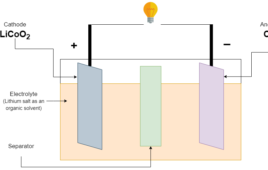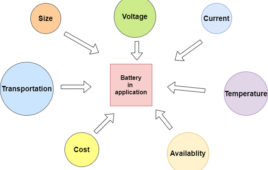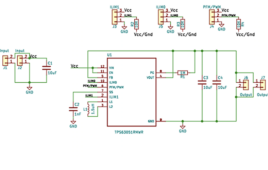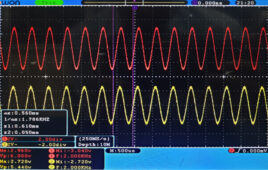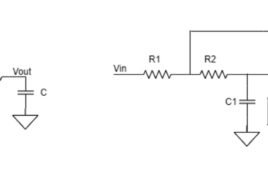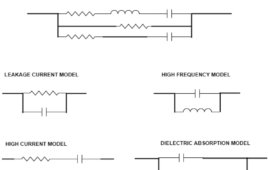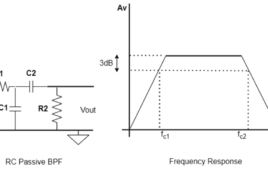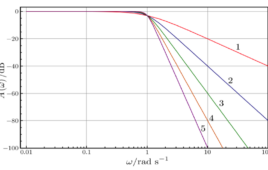LoRa (long-range) technology ensures reliable long-range communication between a node and gateway, providing long-term, low-power use for devices This article provides an explanation of LoRa node-to-gateway communication while introducing a node equipped with two buttons to control the flags. These buttons enable users to turn on or off specific actions associated with each button and…
How LoRa enables long-range communication
LoRa (Long Range) is a type of wireless communication technology designed to send information over long distances with low power consumption. It uses a special technique called chirp spread spectrum (CSS) modulation, which operates by continuously changing the frequency of a transmitted signal over time. This varying frequency generates a waveform (resembling the sound of…
Li-Ion to 12 V DC converter
In this era of battery-operated devices, a DC-DC converter is needed to meet the divergent power requirements of the electronic circuitry. A battery is a type of DC Supply whose output voltage varies with its use. This means it cannot maintain a constant voltage at the output due to its discharging characteristics. For this reason,…
What are LoRa gateways and what types are available?
A LoRa gateway is a wireless communication technology designed for long-range, low-power communication between devices for the Internet of things (IoT). The LoRa gateway receives the data from devices, forwarding it to a network server, which manages the network and handles the data routing and processing. The gateways typically use a dedicated LoRa concentrator chip…
How does LoRa modulation enable long-range communication?
What is LoRa? LoRa (Long Range) is a wireless communication technology that sends information over long distances with low power consumption. It uses a special technique called chirp spread spectrum (CSS) modulation. Chirp Spread Spectrum operates by continuously changing the transmitted signal’s frequency over time. This varying frequency generates a waveform that resembles the sound…
How to use a boost converter with a Li-ion battery and BL8530 IC
A major advantage of a switching regulator is that it can boost a lower voltage into a higher one. This type of regulator is also known as a boost or step-up converter. A boost converter is used to step up an input voltage to a higher level as required by a load. This capability is…
Practical application of hardware filters with real-life examples
In previous articles (including here, here, and here), we discussed the different types of filters available, including examples. If you’ve followed along, you should have an understanding of the frequency components (i.e., attenuating high frequencies when using a low pass filter and the passing frequencies for a high pass filter). You should also be aware…
Practical implementation of bandpass and band reject filters
Bandpass and band reject filters have the combined benefit of both low- and high-passes. They are made by connecting the low-pass and high-pass of different cut-off frequencies. It is beneficial when you require or want to reject only a particular band of frequencies. They are used heavily in investigating audio released from a black box…
Understanding battery management systems
A battery-management system (BMS) is an electronic system or circuit that monitors the charging, discharging, temperature, and other factors influencing the state of a battery or battery pack, with an overall goal of accurately indicating the remaining time available for use. It’s used to monitor and maintain the health and capacity of a battery. Today’s…
How rechargeable batteries, charging, and discharging cycles work
The battery stores electrical energy in form of chemical energy and the chemical energy again able to convert into electrical energy. The conversion of chemical energy to electrical energy is called discharging. The chemical reaction during discharge makes electrons flow through the external load connected at the terminals which causes the current flow in the…
What are the battery-selection criteria for low-power design?
A battery is an electrochemical device that can store energy in the form of chemical energy. It translates to electric energy when the battery is connected in a circuit due to the flow of electrons because of the specific placement of chemicals. For more information on how batteries work, you can read the article which…
Battery configurations (series and parallel) and their protections
A single cell is not sufficient for some devices. To achieve the desired voltage, the cells are connected in series to add the voltage of cells. To achieve the desired capacity, the cells are connected in parallel to get high capacity by adding ampere-hour (Ah). This combination of cells is called a battery. Sometimes battery…
What are the different battery types for specific applications?
In this article, we will learn how to choose a battery according to the specifications and requirements of your application. Some applications need more power and some need to be cheap with less power. There are various factors and parameters that to consider when choosing the best battery for your application. No one battery is…
How to use a buck-boost converter to regulate a Li-ion battery
Nearly every electronic device today relies on a battery as a power source. The dc-dc converter plays a significant role in maintaining the working time of the battery. A buck-boost dc-dc converter is an ideal choice for the most efficient and reliable battery range. The buck-boost converter provides the regulated voltage in the Lithium (Li-ion)…
12 V to 5 V buck converter using LM2576 IC
In our previous experiment, we designed the 5V converter by AP65111AWU-7 SMD IC. In this experiment, we will explore a new IC for converting 12V to 5V DC and then compare both of the IC’s performance curves. We will take an adjustable LM2576 switching regulator, a buck regulator with a fixed frequency of 52 kHz.…
Practical implementation of low-pass and high-pass filter
In today’s electronic devices, many practical applications use hardware filtering implementation. These applications include electrocardiograms (ECG), image processing cameras, etc. Electrocardiograms are medical devices that record the human heart’s activity using a noninvasive approach by encoding heartbeat into signals. But before reading information from these electrical signals, they are filtered out from unwanted noisy signals…
A filter design example
Filters are used in various fields including telecommunications where bandpass filters are used in speech recognition and modems in the audio frequency range (0 Hz to 20KHz). In the central telephone offices, high-frequency (hundreds of MHz)bandpass filters are used for channel selection. In data acquisition systems, low-pass noise filters and anti-aliasing low-pass filters are required…
Problems in filter implementation
The previous sections explained filters by their property, mathematical functions, time and frequency domain responses, and different types. Using the previous sections’ theoretical knowledge, we can implement it in the real world. However, that filter circuit won’t work according to your expectations. The figure below shows how the ideal and real filter work. The…
What are the two types of hardware filters?
Electronic hardware filters can be classified into two types: active and passive. Active Filters: Filter circuits that consist of active components like transistors and op amps with passive components like resistors, capacitors, etc., are called active filters. Passive filter: Filter circuits that consist of only a resistor, capacitor, and inductor and are tuned to resonate…
Types of filter responses
In this article, we will learn about various filter responses. A filter response helps to understand the difference between a filter’s input signal and output signal. Keeping an eye on filter responses is necessary to analyze their behaviors. To have a better understanding of the processed signal, it is important to analyze that signal and…

